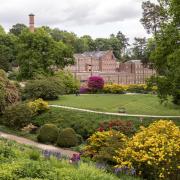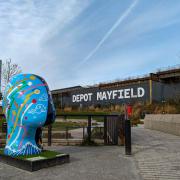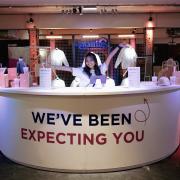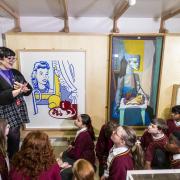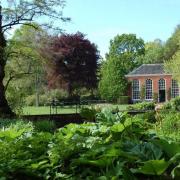The Lady Lever Art Gallery will have a Japanese touch thanks to its latest exhibition, on loan from a Wirral art collector. Rebekka O’Grady visits to find out more

Long before the bright lights of Tokyo, there was a city that was just as vibrant and contemporary. Edo, the predecessor of Japan’s capital, was a lively metropolis on the brink of change - a wooden city of a million people that had a buzzing, exciting pop culture 150 years before the 1960s took the style as its own.
It’s a culture that during the 19th century was documented in colourful Ukiyo-e wood block prints - beautiful hand-crafted images that really do tell a thousand words. Everything from urban celebrities, actors and sports champions, to fashion icons, politics and villains were presented in extraordinary detail – stories that we can all now enjoy thanks to a new exhibition at the Lady Lever Art Gallery in Port Sunlight.
Opening on May 26th and running until September 4th, Edo Pop: Japanese Prints, will feature a series of these vibrant images, all on loan from the private collection of art historian and writer, Frank Milner. Frank, who lives in Wallasey, has been collecting Japanese prints for over 40 years, after being inspired by an exhibition at the V&A in London.
‘I saw the Floating World exhibition in 1973 and I thought it was marvellous. It was the first time I’d seen Japanese prints in such quantity. They’re best looked at in that way. Well, that’s how I see it as I now have them all around me.’

Almost 100 pieces in Frank’s stunning collection are on display in the hallway of his Wirral home, a cascading waterfall of prints around the stairwell and landing. A further 47 will be on display at the Lady Lever. The collector has previously had an exhibition held at Harrogate’s Mercer Art Gallery in 2015.
‘I only really seriously began to collect in the past 10 years or so. It’s the formal and aesthetic qualities of the prints that I like; the quirky perspectives, bright colours and impact of designs. They tell the story of the city.
‘Often, when people think of Japanese prints, the typical notion is the Big Wave by Hokusai, beautiful landscapes and flowers. What I like is the side of Japanese prints that is almost reflective of Liverpool on a Saturday night: the buzz, people enjoying themselves and a sense of life lived outdoors. You see that in these prints, a vibrant street life with urban stories.’
During the 19th century, these vibrant prints were ‘mass produced’ by hand and eagerly sought by fans of Edo’s pop culture. The technically accomplished Ukiyo-e prints, often produced from 12 or more woodblocks, were issued in runs of up to 7,000 of each image.
‘These prints, many of which are portraits of 19th century contemporary heroes, were originally bought by ordinary fans for as little as the price of a bowl of noodles or a hair cut. Photography came very late to Japan so the prints were a recording of life,’ said Frank, who retired some years ago after a career spent in the arts. He was the head of education at National Museums of Liverpool, where he worked for 30 years, making his exhibition at the Lady Lever even more special as the art gallery is part of that group.
‘Now, the prints can range from £70 upwards, it all depends on demand and rarity. A practical estimate is the likes of a Hokusai will be much more expensive. I know one at the British Museum cost the price of a house.’
Edo Pop features a Hokusai print from the same series as his famous image, the Great Wave, and will be accompanied by prints from other leading artists and printmakers such as Kuniyoshi, Kunisada and Kunichika.
Split across several themes, the exhibition reveals social customs, pastimes and lifestyle in a time when government censorship was strict. The main areas include women of the Yoshiwara – an 18 acre walled, guarded and gated zone on the edge of Edo that was home to 3,000 prostitutes, actors (around 80% of all Japanese woodblock prints were of Kabuki actors or scenes from plays), modernisation of Edo and sumo wrestling and Samurai warriors.
‘To be able to display some of the highlights of my collection at the Lady Lever Art Gallery is, for me, a privilege. Here they will be given enough space to be able to really appreciate their unique qualities and it’s a pleasure to share it with other people.’
Sandra Penketh, director of Art Galleries at National Museums Liverpool, said: ‘This is a wonderful opportunity for our visitors to get an insight into a fascinating city, rich in culture and character. These evocative images will take visitors back in time to a world of beautiful geishas, brave samurai warriors and fabulous story-telling.
‘We’re sure people will be won over by the striking imagery and skilful execution, enjoying them as exquisite windows into another world, seemingly very different to our own but on closer inspection dealing with many familiar human subjects.’
Edo Pop: Japanese prints will run from May 26th - September 24th at the
Lady Lever Art Gallery, Port Sunlight Village, Wirral, CH62 5EQ
Tel: 0151 478 4136, liverpoolmuseums.org.uk/ladylever






